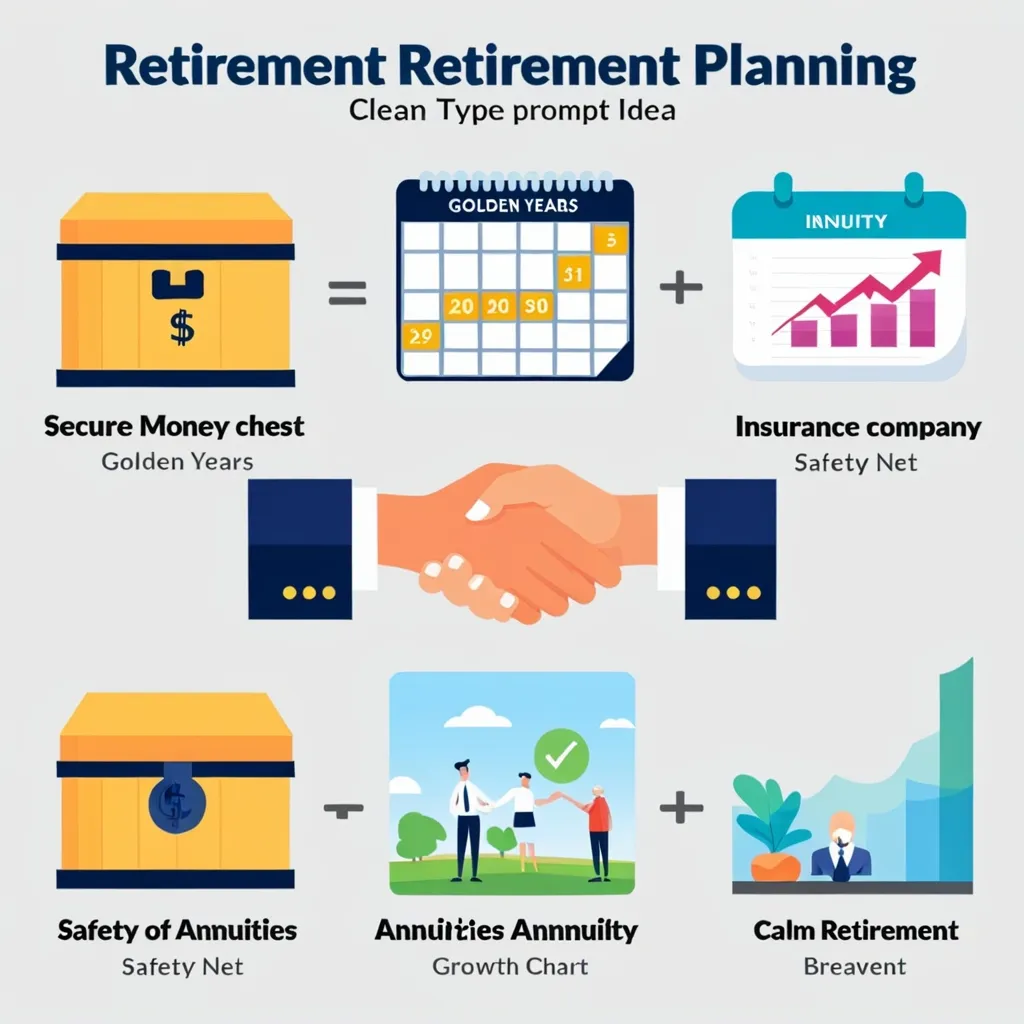Retirement planning is one of those things that’s easy to put off but crucial to get right. Among the tools to consider when preparing for your golden years is the annuity. But what exactly is an annuity, and should it be part of your game plan? Let’s dive in.
An annuity is pretty much a deal between you and an insurance company. In exchange for your money now, you get a steady stream of income later—sometimes for the rest of your life. Simple, right? But like any financial decision, it’s got its pros and cons.
So, what’s the nitty-gritty of how an annuity works? You put in either a lump sum or a series of payments, and the insurance company promises to send money your way at an agreed upon time. The insurance folks invest your cash and, over time, it ideally grows. The payouts you get later are a mix of your original investment plus any interest earned, minus fees.
There’s not just one kind of annuity; you’ve got options. Immediate annuities start paying you almost instantly after you shell out a single premium. Deferred annuities wait a bit, giving your money a chance to grow before kicking in with payments down the line. Fixed annuities lock in a guaranteed payout, making them a safe bet for those who love predictability. Index annuities blend security with a slice of the market action—typically less risky but still giving a shot at higher returns. Variable annuities tie your returns to investment performance, offering the chance for higher payout but also bringing more risk into the mix.
What makes annuities tempting? For starters, they promise a guaranteed income for life, a huge relief for anyone worried about outliving their savings. The money grows tax-deferred, so you don’t pay taxes until you start withdrawing. Plus, many annuities come with a death benefit, ensuring that your money goes to your loved ones if something happens to you.
But wait—it’s not all sunshine and rainbows. Annuities can come with high fees that might rival or even exceed those of other managed investment portfolios. They’re also complex; all those terms and conditions can make your head spin. They’re not very liquid either. Think twice before committing, because getting your money out early can rack up penalties and surrender charges. Lastly, the risk: specifically with variable annuities, your returns can fluctuate with the market, which can be nerve-wracking.
So, who stands to benefit the most from an annuity? People who need a guaranteed income stream and can’t bear the thought of running out of money in retirement. Those on the risk-averse side who want stable, predictable income without the rollercoaster of market investments might find fixed annuities appealing. Also, folks who want their money to grow tax-deferred could gain an edge here.
Then, there’s the flip side. If your retirement savings are already ample, or if you can comfortably ride the ups and downs of the market, you might not need an annuity. Savvy investors who can manage their own portfolios might find other options more rewarding.
Before running off to sign any papers, keep the tax implications in mind. The earnings grow tax-deferred, but Uncle Sam will take his cut when you make withdrawals. And if you cash out before hitting 59½ years old? Say hello to a 10% IRS tax penalty on top of the regular tax.
Deciding whether an annuity is right for your retirement plan boils down to your personal financial situation and goals. Ask yourself questions like: “When do I want to retire?” “Will my savings last?” and “How much risk am I okay with?” If you’re close to retirement and need guaranteed income, an annuity could be a lifesaver. If you’re worried about your savings running dry, it provides added security. On the other hand, if you like stable, reliable income, go for a fixed annuity. If you’re open to facing some market risk for potentially higher returns, a variable annuity might be your jam.
To wrap it up, annuities can be quite useful for certain retirement plans, offering guaranteed income and the benefit of tax-deferred growth. However, they come loaded with complexity and fees. It’s essential to understand the different types and evaluate their pros and cons in the context of your financial goals. Consulting with a financial advisor can provide you with tailored advice that suits your needs.
Annuities aren’t a one-size-fits-all solution, but they can be a powerful addition to your toolkit for a secure retirement. The key is understanding how they work and making an informed decision. That way, you can confidently decide if they fit into your overall retirement strategy.






